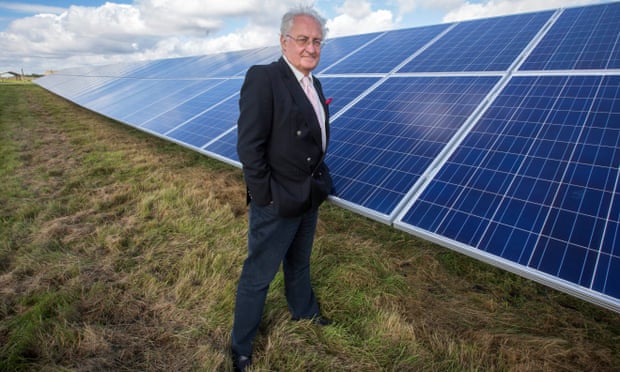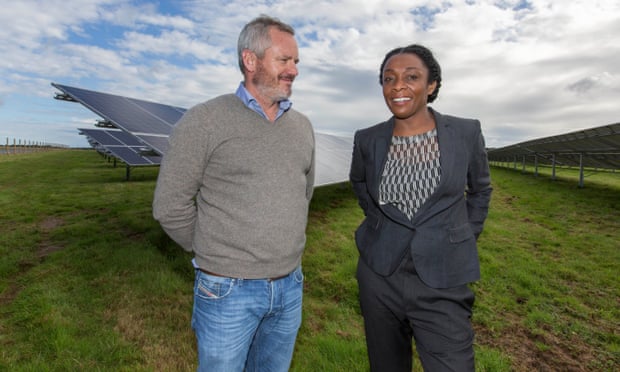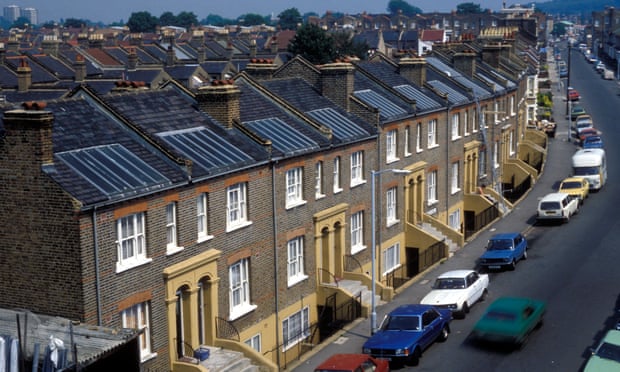The rush for solar power: buy now, before it's too late
This has been a bumper year for solar energy in the UK, and polls show it has become our favourite kind of power. But with drastic cuts threatened, is the industry racing off the edge of a cliff?
“The biggest challenge was the grid connection,” says Donna Clarke with satisfaction. Clarke has worked in renewables for 15 years, and developed the UK’s only biodiesel plant before moving into solar energy. When the company she now works for, Scottow Moor Solar, arrived at RAF Coltishall in May last year, there was no means to plug the 50MW (megawatts) of power they thought could be generated on the former airfield – enough to run 15,000 homes – into the electricity supply.
Nearly 18 months later, with phase one of East Anglia’s biggest solar farm completed on schedule in March, and a second phase planned, there are not one, but two connections to carry 33MW of power. One 7MW connection was bought from a developer whose planning application for two wind turbines had been refused following local objections.
Negotiating a route for the other 26MW was more complicated, as the local grid was at full capacity, but Scottow Moor founder David Fyffe managed to persuade UK Power Networks (UKPN) to support a pilot, flexible-connection scheme, meaning the power can be turned down or “curtailed” when not needed. Phase two of the project will require a third connection for a further 20MW of power – bringing the total output to 50MW, making Scottow Moor one of the UK’s biggest solar farms.
When I visited the site last month, there was a palpable sense of relief. Decommissioned military bases, with their poor infrastructure and decrepit buildings, are notoriously awkward to develop. But here in Norfolk, Scottow Moor’s backers think they’ve hit on a winning scheme – and in the nick of time.
As the second phase of the Guardian’s Keep It in the Ground campaign has highlighted, solar power has gone through a remarkable period of growth since the demoralising Copenhagen climate summit in 2009: in the intervening six years, the cost of panels has fallen by 70%, with the government’s target of 750,000 domestic solar installations by 2020 reached this year. Following her promotion in May, energy secretary Amber Rudd promised to “unleash a new solar revolution”, singling out commercial rooftop developments, still a relative rarity in the UK, and perhaps thinking too of her Hastings constituents with their sun-kissed, southern roofs. But just three months later, she was announcing drastic cuts. In the next few weeks, Rudd, who used to work under chancellor George Osborne in the Treasury, will decide whether or not to reduce by almost 90% the feed-in tariff that subsidises small-scale solar installations, such as household roofs, from 1 January 2016. A consultation closes next week.
For those considering installing solar panels, the race is already on. In the weeks since Rudd’s about-turn, several companies have already gone bust.
“The rush is there. We are seeing it at many levels – large and small-scale, commercial rooftop, schools and residential,” says Reza Shaybani, chairman of the British Photovoltaic Association (BPVA). “I’m taking calls from members saying they will be doing the equivalent of eight months’ installations in the next three months, and as you can imagine, that will have an impact on safety and quality. No matter who you are, if you rush, you cut corners.”
At Scottow Moor, the challenge was to get hold of and install 133,560 panels by the end of March to ensure that the project qualified for ROCs (Renewable Obligation Certificates). ROCs were one of the government’s ways of subsidising renewable energy projects greater than 5MW, until they were withdrawn from new, ground-mounted solar farms this year. The £30m project was completed in seven weeks, using 20 contractors, including three different suppliers of panels because one company could not make them quickly enough. Project manager Gareth Hawkins calls Scottow Moor “the fastest per-MW build in Europe”.
The 600-acre site, which is a conservation area covered in listed buildings with a prison for sex offenders at one edge, is owned by Norfolk county council, and when I visited council leader George Nobbs was on hand to celebrate. With his white hair, pink tie and a red handkerchief in his top pocket, Nobbs cuts a genial and jaunty figure.
“We’re one big happy family,” he says of Labour’s alliance with Liberal Democrats and Ukip, which ensures Labour and not the Conservatives leads the council, with support from the Greens. It was a Lib Dem, John Timewell, who suggested a solar farm in the first place, Nobbs says, and planning permission was granted by two Conservative-run district councils. After our interview, Nobbs gamely agrees to try to catch up with the sheep grazing under the panels for the Guardian’s photographer, so we can show how, on this flat patch of Norfolk, solar and livestock coexist (but sadly the sheep run away).
Coltishall was bought for £4m under the previous council administration three years ago, and the deal with Scottow Moor Solar means Nobbs has now made this money back. Now he and his colleagues have to attract businesses to the empty offices and aircraft hangars that have been rebranded Scottow Enterprise Park, but have so far escaped the attention of satnav: the taxi driver who took me there could find no trace of street name or postcode.
Everyone seems very pleased that TV company October Films has moved in, and plans to make a programme involving fast cars on the runway once used by Hurricanes and Spitfires and saved for reasons of nostalgia (the local village is called Badersfield, after fighter pilot Douglas Bader, who was briefly based here). More recently, says Hawkins, one of Scottow Moor’s investors used it to land a helicopter.
Whether plans to regenerate the area economically will succeed remains to be seen. There have been complications: Scottow Moor Solar has already spent more than £350,000 having the site swept for ammunition. The council would like the park to become a hub for green businesses, and phase two of the solar farm will provide electricity to the four aircraft hangars it hopes to let. But if the story so far is one of success – of co-operation between the public and private sectors; of a local farmer working with developers (the grazing arrangements don’t work with cows or horses that are too heavy and can damage equipment, so it’s sheep or nothing); of cross-party co-operation and a community with strong feelings about its military heritage brought on side through consultation – both the politicians and developers who made it happen fear there won’t be many more like it.
Partly because of the March cut-off for some subsidies, 2015 has been a bumper year for solar. Britain added more capacity last year than any other European country, and July set a new record, when on one glorious summer’s day 16% of all UK electricity was sun-powered – with around half coming from domestic rooftops, the rest from solar farms. In the same month Greg Barker, energy minister until he stood down from parliament in May, was named president of the British Photovoltaic Association (BPVA). In September, a poll for ICM found solar the most popular form of energy among voters of all parties – with 30% naming it their favourite, compared with 15% for nuclear and 13% for gas – and 78% saying the government should do more to help communities generate their own power. Solar was on a roll.
But the recent change in government policy has cast a sudden shadow. Even if the government rows back on the extreme cuts proposed, as some of its own MPs would like it to, there is no doubt subsidies will shrink, and an industry set to deliver 1GW of new solar per year will have to scale back – with domestic and small-scale rooftop installations the most obvious victims, even though policy has been to support these in preference to ground-mounted solar on agricultural land.
In the meantime, those companies that can are doing their best to make hay while the sun shines. Shaybani says the industry was prepared for a shock; orders were placed in advance and as a result, there is no shortage of modules right now. But a binge, he says, is the last thing the industry needs – especially when this looks set to be followed by a period of starvation.
Since the subsidy cuts are in the cause of saving money – higher-than-expected demand for solar having led to overspending of the budget – he argues that by stimulating a run on solar panels, the government is making things worse. While he likens previous changes in the subsidy regime to bumps in the road, the industry is now, he says, at “the edge of a cliff”.
“The redundancies we have seen are the tip of the iceberg,” he continues. “In any business, if your number of customers is limited you don’t need a big team.”
Sonia Dunlop, spokesperson for the Solar Trade Association, agrees. “The industry already had a plan to wean itself off subsidies between 2020 and 2025,” she says, “but the caveat was that we needed a stable policy framework to get us there. It’s about energy independence and investment in cheaper energy over 20-30 years. For most people it’s definitely not a green thing.”
Back in Norfolk, Clarke and Hawkins are getting stuck into phase 2 of Scottow Moor Solar’s farm. Around 43,000 more ground-mounted panels will be here by next spring, with work beginning in December.
“Speed creates challenges, especially when there are complex issues to deal with around the grid,” says Clarke, “but we think our experience means this time round there will be few surprises. Obviously, the uncertainty around policy is not helpful. But this is a project that was always going to be completed. There is a need on site for this electricity supply, and locally it’s got a lot of support.” How many similar projects will get off the ground and whether, if they do, smaller rooftop solar will be squeezed out, remains to be seen.
Source by:http://www.theguardian.com/environment/2015/oct/16/solar-power-race-is-on-renewable-energy



No comments:
Post a Comment